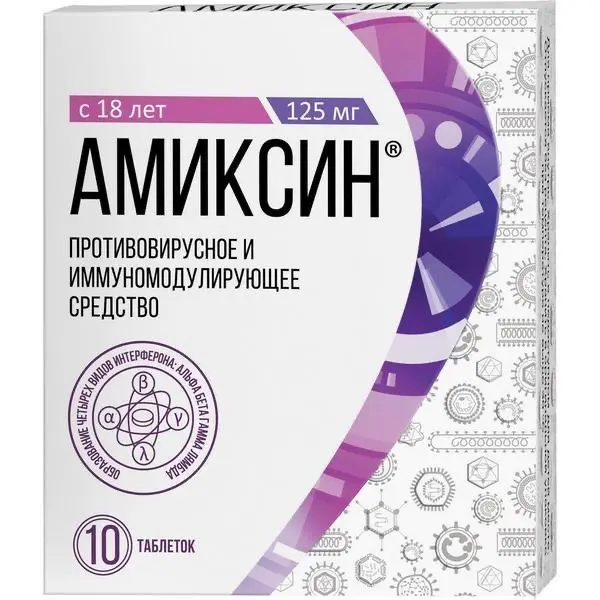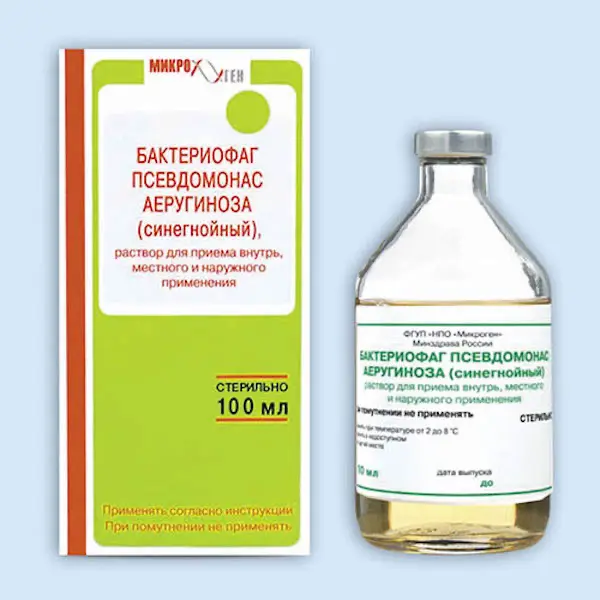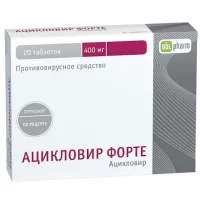Description
Osmivir-Medisorb Pharmacodynamics
Mechanism of action
Antiviral drug. Oseltamivir is a prodrug, its active metabolite (oseltamivir carboxylate, OC) is an effective and selective inhibitor of influenza virus neuraminidase type A and B – the enzyme that catalyzes the release of newly formed viral particles from infected cells, their penetration into uninfected cells of respiratory epithelium and further spread of the virus in the body. Inhibits the growth of influenza virus in vitro and suppresses viral replication and pathogenicity in vivo, reduces the release of influenza A and B viruses from the body. The OC concentration required to inhibit neurominidase by 50% (IC50) is 0.1-1.3 nM for influenza A virus and 2.6 nM for influenza B virus. The median IC50 value for influenza B virus is slightly higher at 8.5 nM.
Clinical efficacy
In the studies conducted, oseltamivir had no effect on influenza antibody formation, including antibody production in response to administration of inactivated influenza vaccine.
Studies of Natural Influenza Infection
In clinical studies conducted during seasonal influenza infection, patients began receiving oseltamivir no later than 40 hours after the first symptoms of influenza infection appeared. 97% of patients were infected with influenza A virus and 3% of patients were infected with influenza B virus. Oseltamivir significantly shortened the period of clinical manifestations of influenza infection (by 32 hours). In patients with a confirmed diagnosis of influenza who took oseltamivir, the severity of illness, expressed as the area under the curve for the total index of symptoms, was 38% lower compared to patients who received placebo. Moreover, in young patients without comorbidities, oseltamivir reduced by about 50% the incidence of flu complications requiring antibiotics (bronchitis, pneumonia, sinusitis, otitis media). There was clear evidence of efficacy of the drug with respect to secondary efficacy criteria relating to antiviral activity: oseltamivir caused both a shortening of the time of virus release from the body and a reduction in the area under the “viral titers-time” curve.
Data obtained in a study of oseltamivir therapy in elderly and senile patients show that administration of oseltamivir at a dose of 75 mg twice a day for 5 days was accompanied by a clinically significant reduction in the median period of clinical manifestations of influenza infection, similar to that in adult patients of younger age, but the differences did not reach statistical significance. In another study, influenza patients older than 13 years with concomitant chronic cardiovascular and/or respiratory diseases received oseltamivir in the same dosing regimen or placebo. There were no differences in the median period before reduction of clinical manifestations of influenza infection in the oseltamivir and placebo groups, but the period of fever with oseltamivir was shorter by about 1 day. The proportion of patients who excreted the virus on days 2 and 4 became significantly less. The safety profile of oseltamivir in at-risk patients did not differ from that in the general adult patient population.
Indications
– Treatment of influenza in adults and children over 1 year of age.
– Prophylaxis of influenza in adults and children over 12 years of age in groups at high risk of contracting the virus (in military units and large work collectives, in weakened patients).
– Influenza prevention in children over 1 year of age.
Contraindications
– Hypersensitivity to oseltamivir or any component of the drug.
– Terminal stage of renal failure (creatinine clearance ?10 ml/min).
– Childhood age less than 1 year.
– Severe hepatic insufficiency.
Dosage and administration
- Orally, with a meal or independently of meals. Tolerability of oseltamivir can be improved if taken with food.
- If adults, adolescents and children have problems swallowing the capsules, or if there are signs of “aging” of the capsules (for example, increased fragility or other physical disorders), you should open the capsule and pour its contents into a small amount (maximum 1 teaspoon) of a suitable sweetened food (chocolate syrup with normal or no sugar content, honey, light brown sugar or table sugar dissolved in water, sweet dessert, condensed milk with sugar, apple, sweetened milk with sugar). The mixture should be thoroughly mixed and given to the patient whole. The mixture should be swallowed immediately after preparation. Detailed recommendations are given in the subsection “Extemporaneous preparation of Osmivir Medisorb suspension”.
- Standard dosing regimen
- Treatment
- The drug should be started no later than 2 days after the development of symptoms.
- Adults and adolescents aged ? 12 years old.
- By 75 mg 2 times per day orally for 5 days. Increase of dose more than 150 mg/day does not increase the effect.
- Children from 1 to 12 years of age
- Children with a body weight > 40 kg who are able to swallow the capsules may also be treated by taking one 75 mg capsule 2 times a day for 5 days.
- For children over 1 year of age, an extemporaneous preparation of a suspension using 75 mg capsules is possible (see subsection “Extemporaneous preparation of Osmivir Medisorb suspension”).
- Use Osmivir Medisorb twice daily for 5 days according to the table below:
- Body weight Recommended dose per administration Amount of medication Osmivir Medisorb suspension
- per administration
- 15 kg 30 mg 2 ml
- >15-23 kg 45 mg 3 ml
- >23-40 kg 60 mg 4 ml
- >40 kg 75 mg 5 ml
- Prophylaxis
- The drug should be started no later than 2 days after exposure to the ill person.
- Adults and adolescents aged ? 12 years old.
- 75 mg once daily orally for at least 10 days after exposure. During seasonal influenza epidemics, 75 mg once daily for 6 weeks. The prophylactic effect lasts as long as the drug intake lasts.
- Children from 1 to 12 years of age
- Children with body weight > 40 kgs who are able to swallow the capsules may also receive prophylactic therapy by taking 1 capsule 75 mg 1 time per day for 10 days.
- For children over 1 year of age, an extemporaneous preparation of suspension using 75 mg capsules is possible (see subsection “Extemporaneous preparation of Osmivir Medisorb suspension”).
- Use Osmivir Medisorb once daily for 10 days according to the table below:
- Body weight Recommended dose per administration Amount of Osmivir Medisorb suspension
- per administration
- 15 kg 30 mg 2 ml
- >15-23 kg 45 mg 3 ml
- >23-40 kg 60 mg 4 ml
- >40 kg 75 mg 5 ml
- Dosage in special cases
- Patients with kidney damage
- Treatment
- No dose adjustment is required in patients with creatinine clearance greater than 60 ml/min. In patients with a creatinine clearance of 30 to 60 mL/min, the dose of oseltamivir should be reduced to 30 mg twice daily for 5 days (see subsection “Extemporaneous preparation of Osmivir Medisorb suspension”).
- In patients with a creatinine clearance of 10 to 30 mL/min, the dose of oseltamivir should be reduced to 30 mg once daily for 5 days. In patients on permanent hemodialysis, oseltamivir at the initial dose of 30 mg can be taken before dialysis if influenza symptoms appear within 48 hours between dialysis sessions. To maintain plasma concentrations at therapeutic levels, oseltamivir should be taken 30 mg after each dialysis session. In patients on peritoneal dialysis, oseltamivir should be taken at an initial dose of 30 mg before dialysis, then 30 mg every 5 days. Pharmacokinetics of oseltamivir in patients with end-stage renal failure (with creatinine clearance ?10 ml/min) who are not on dialysis have not been studied. In this regard, there are no dosing recommendations for this group of patients.





